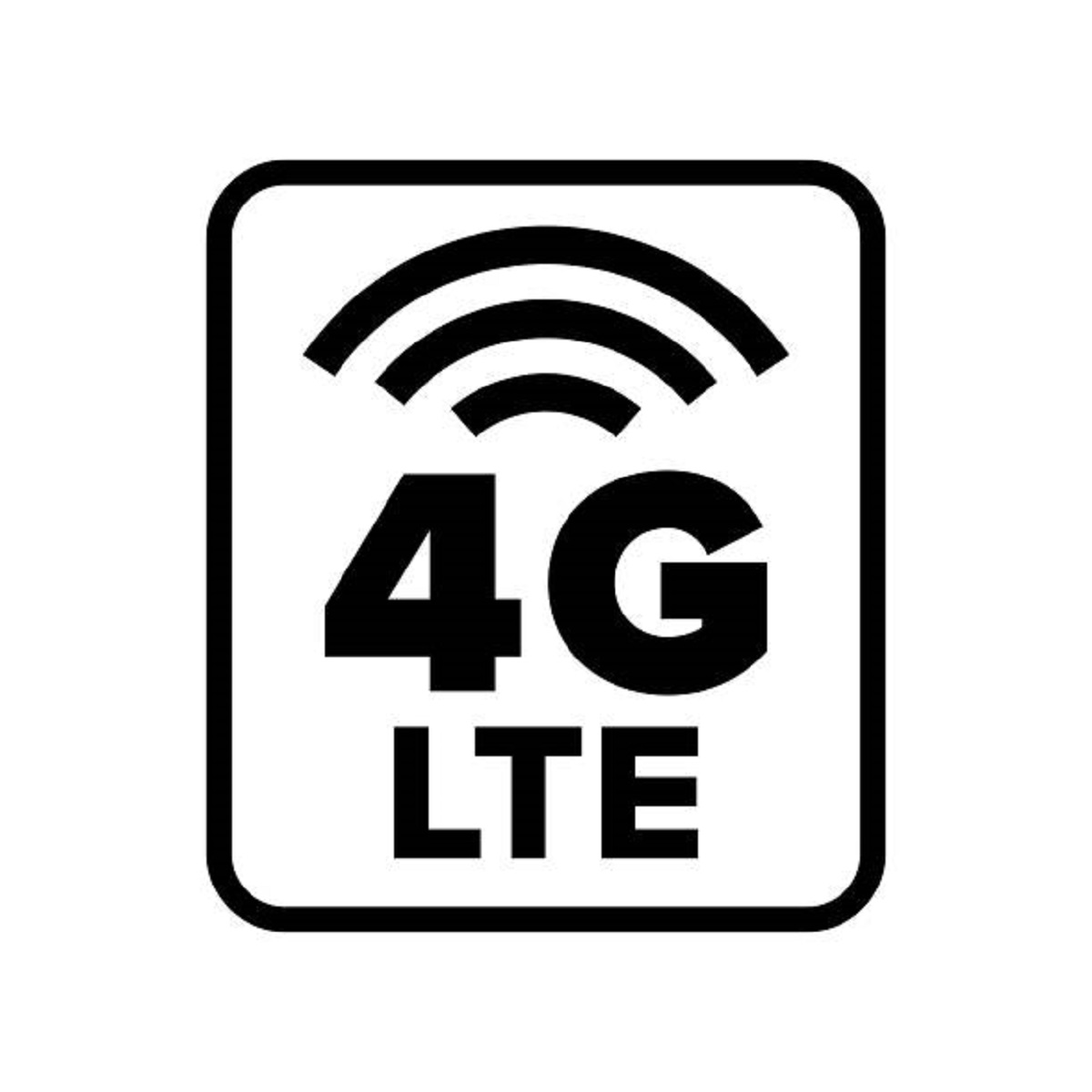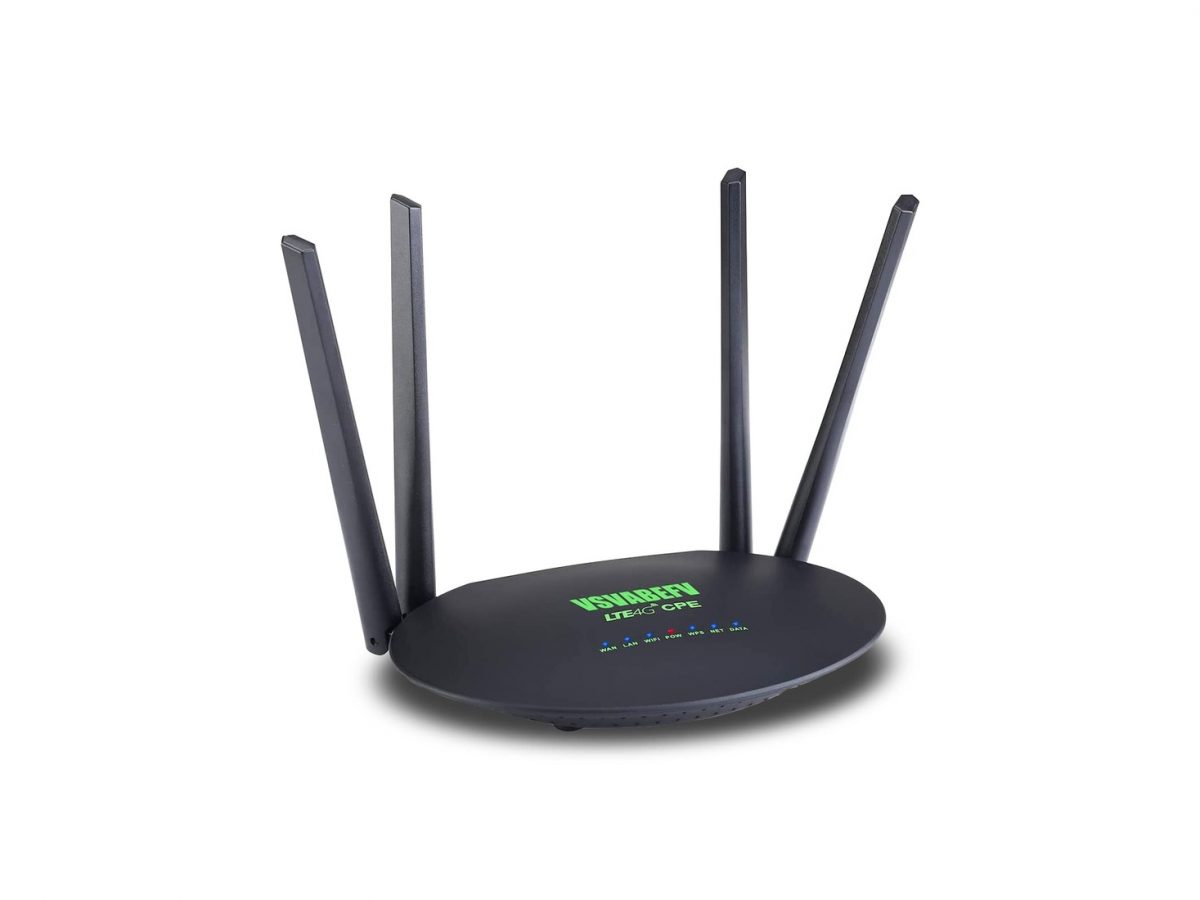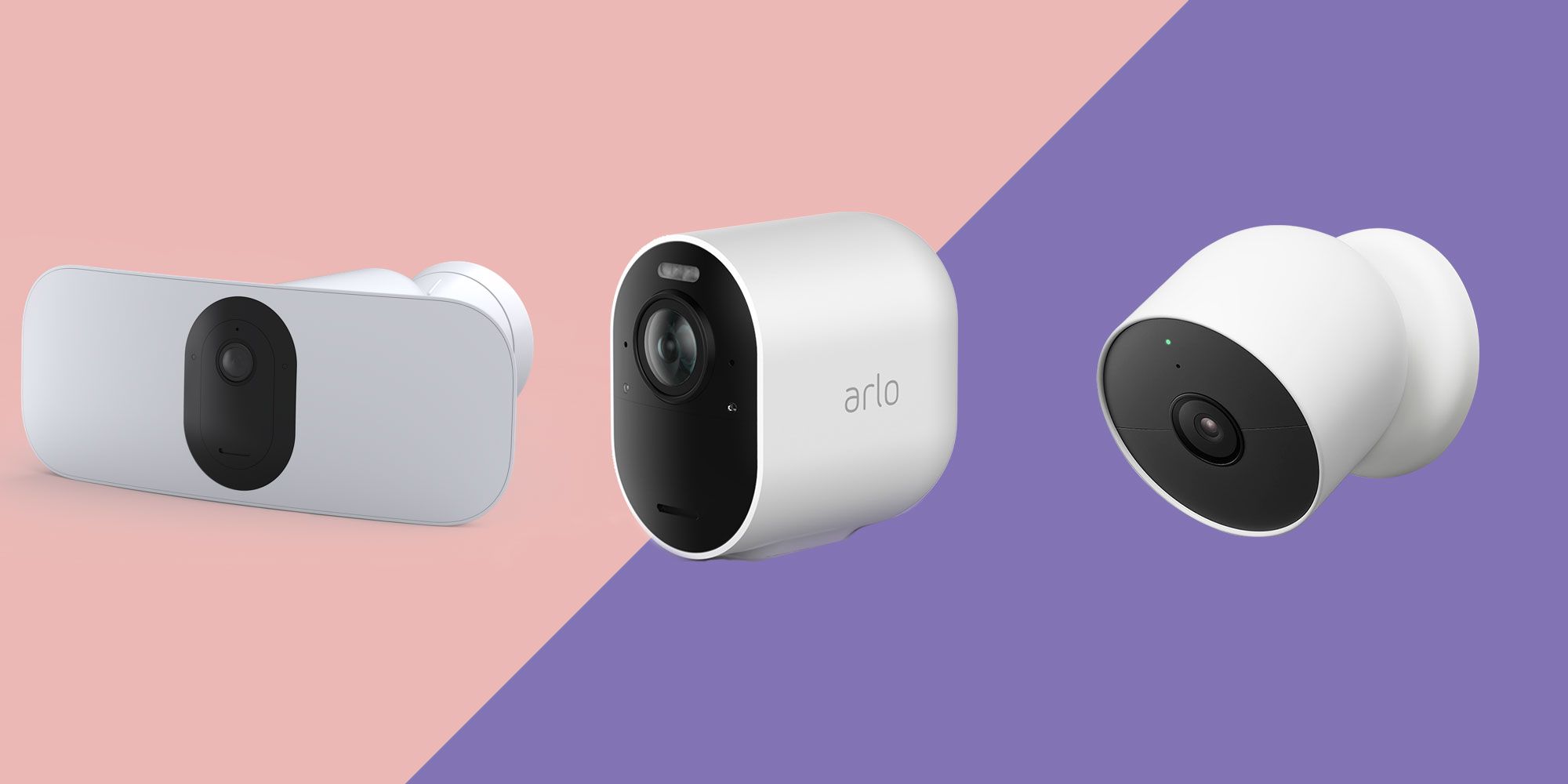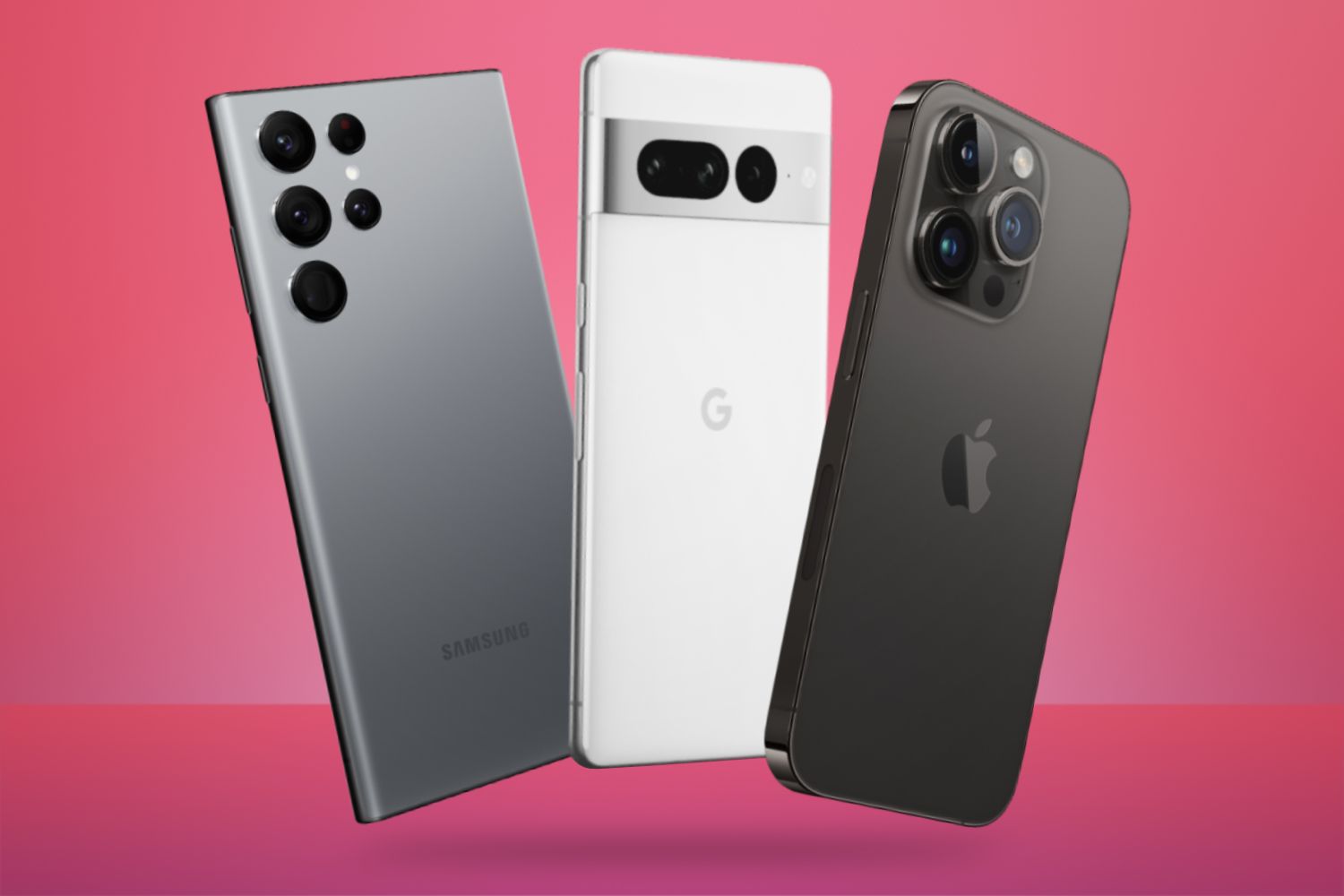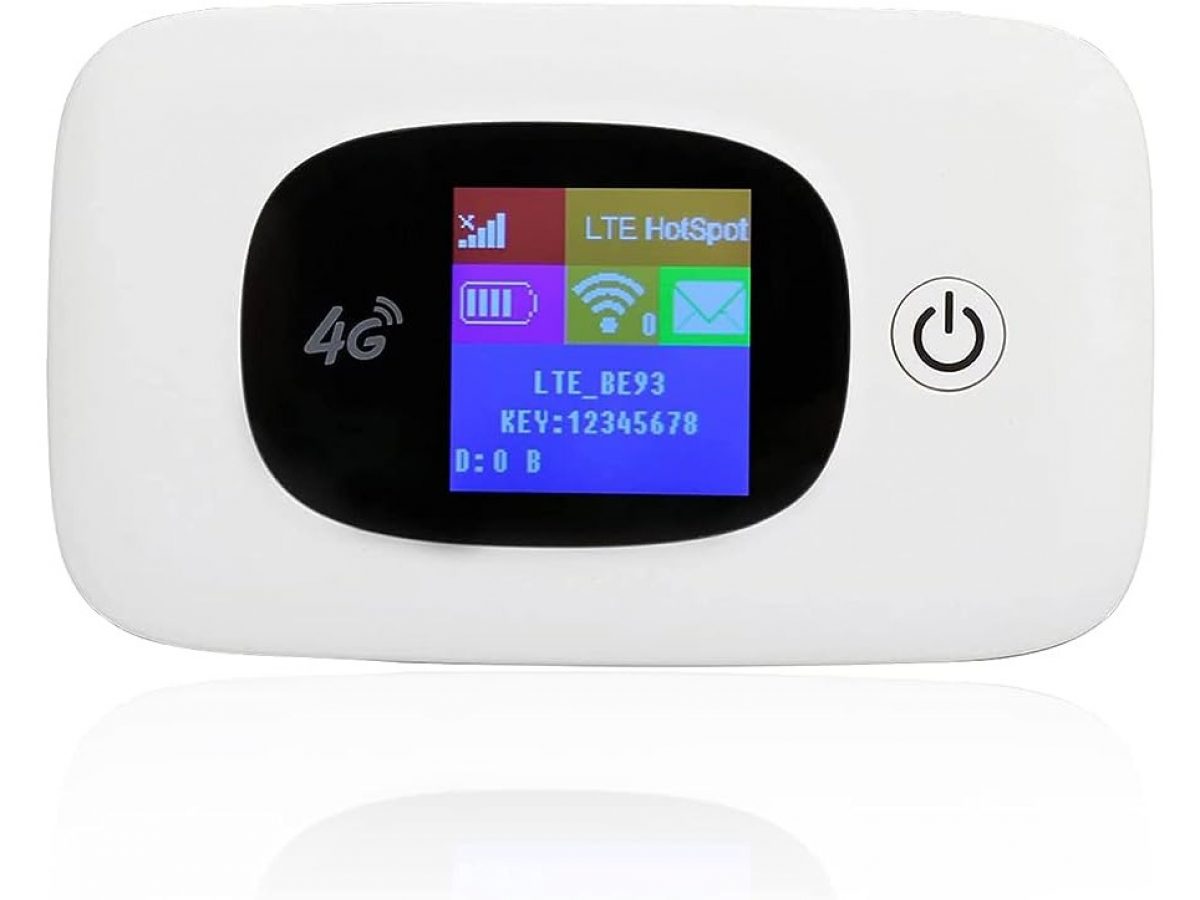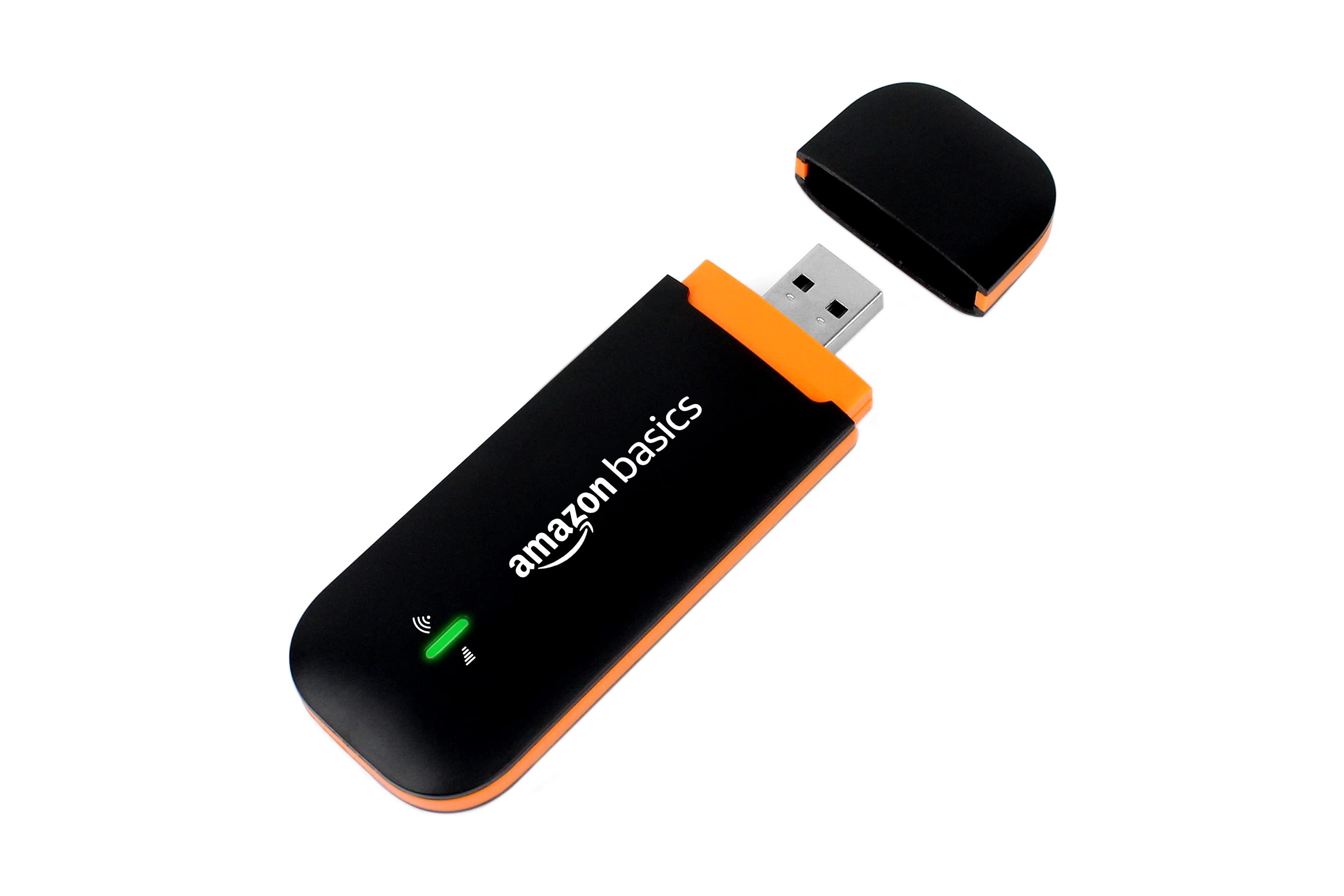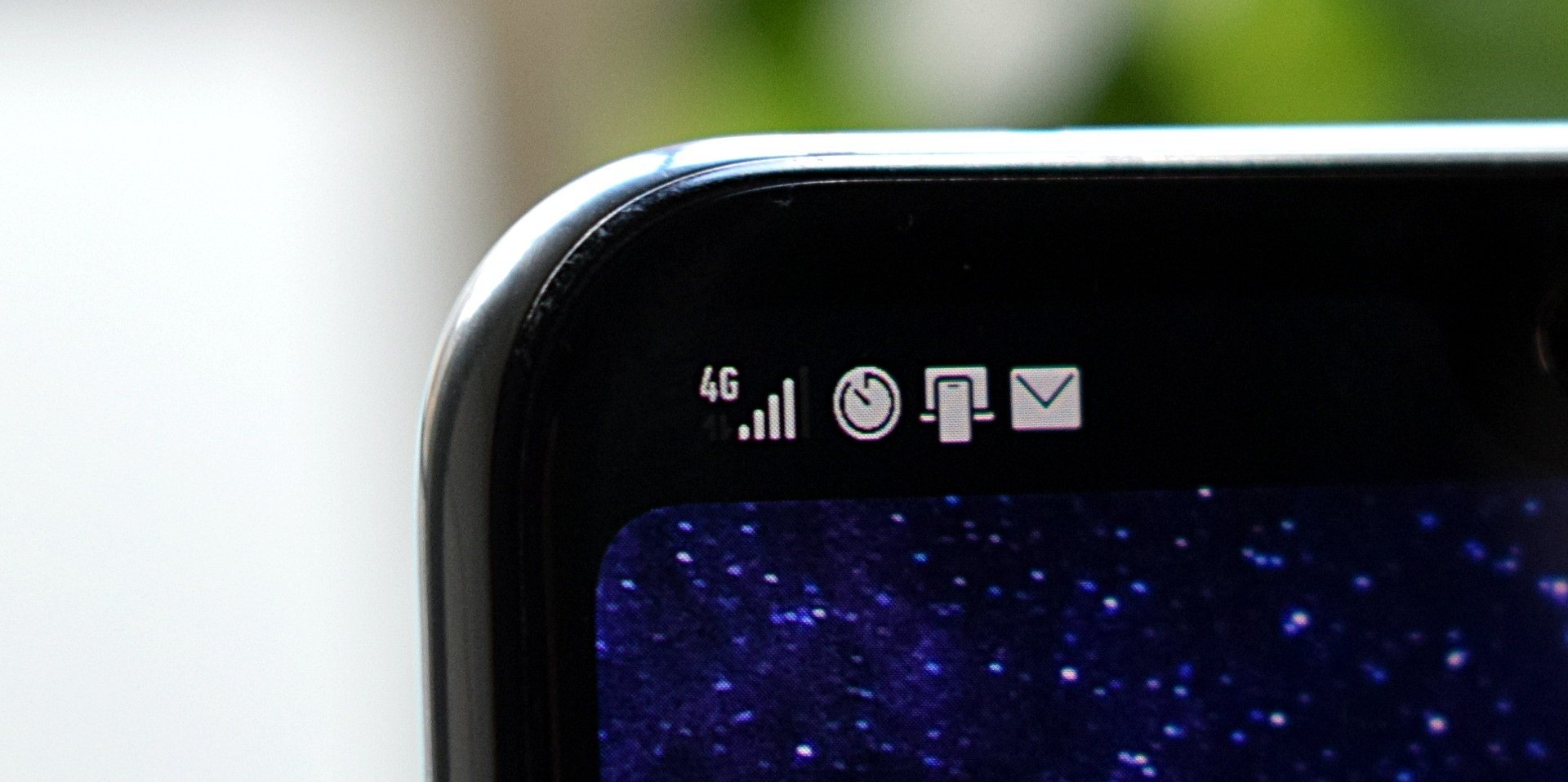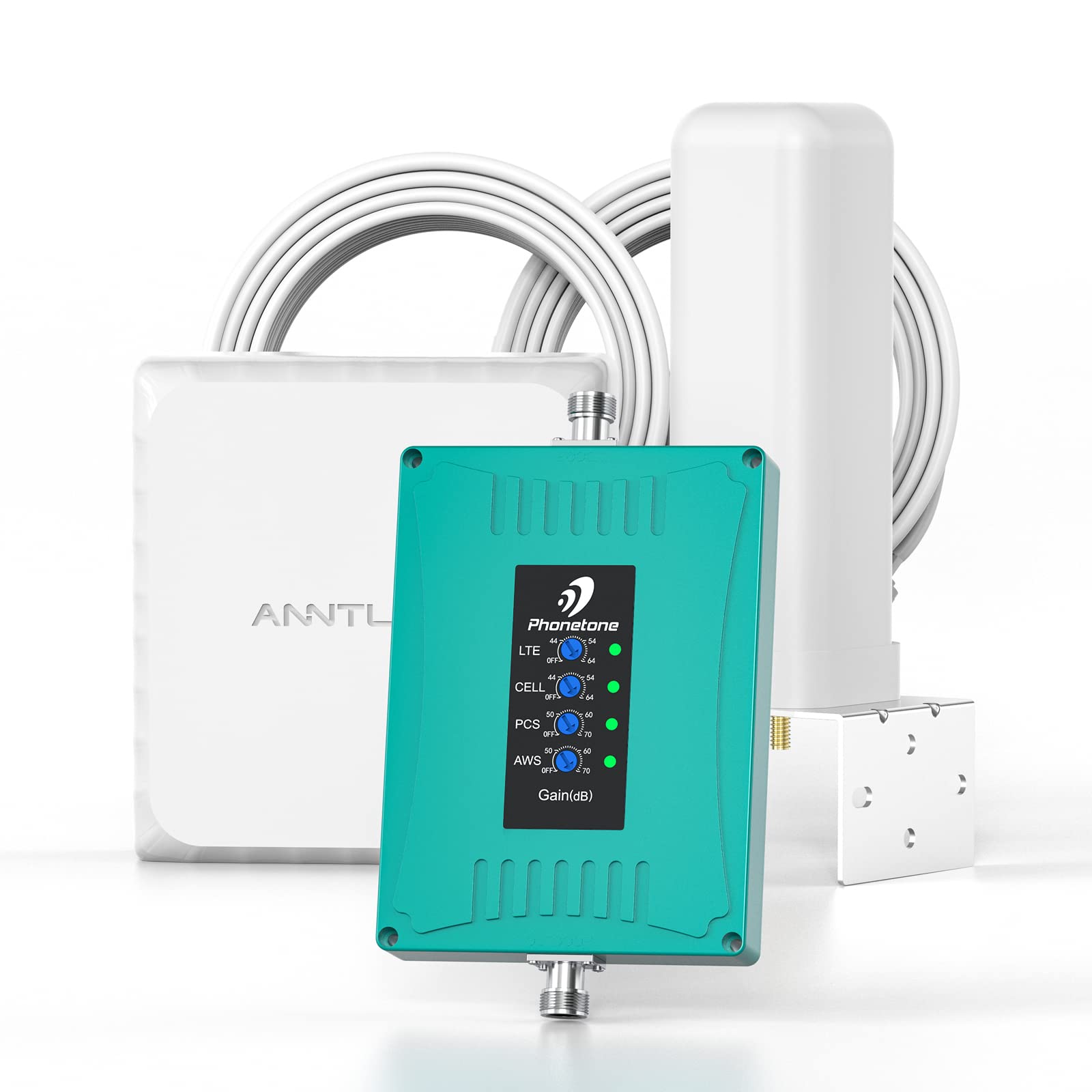What Is 4G LTE?
4G LTE, short for Fourth Generation Long Term Evolution, is a wireless communication technology that provides high-speed internet access to mobile devices like smartphones, tablets, and other connected devices. It is a significant upgrade from the previous generation of mobile networks, enabling faster download and upload speeds, reduced latency, and improved network capacity.
Launched commercially in 2009, 4G LTE has revolutionized the way we use mobile devices and access online content. It enables seamless streaming of high-definition videos, smooth online gaming experiences, and faster web browsing capabilities. With 4G LTE, you can stay connected on the go and enjoy a wide range of online services with minimal interruption.
Unlike its predecessor, 3G, which was primarily designed for voice calls and basic internet browsing, 4G LTE is optimized for data transmission. It offers significantly higher data transfer rates, allowing users to download large files, stream multimedia content, and engage in bandwidth-intensive applications effortlessly.
4G LTE operates on a broader frequency spectrum, providing increased network capacity and improved signal penetration through obstacles. This enables a more consistent and reliable connection in areas with heavy network traffic or buildings with dense infrastructure.
As the demand for faster and more reliable mobile internet continues to grow, 4G LTE has become the standard mobile network technology globally. It has transformed the way we communicate and consume digital content, enhancing productivity, entertainment, and overall user experience.
In the next sections, we will dive deeper into how 4G LTE works, its key features and benefits, as well as the differences between 4G and 4G LTE.
Understanding the Basics of 4G LTE
To fully grasp the capabilities and significance of 4G LTE, it’s essential to understand the basics of how this technology works. At its core, 4G LTE is a wireless communication standard that utilizes packet-switched networks to transmit data rapidly and efficiently.
The foundation of 4G LTE lies in its use of advanced modulation techniques and multiple antennae configurations. These features enable the transmission and reception of data over different frequency bands, allowing for simultaneous data streams and faster download and upload speeds.
One of the key components of 4G LTE is its use of an all-IP (Internet Protocol) network architecture. This means that all data, including voice calls, is transmitted as digital packets over the internet. This shift from traditional circuit-switched networks to packet-switched networks results in improved efficiency and better utilization of network resources.
Additionally, 4G LTE employs a technology known as OFDMA (Orthogonal Frequency Division Multiple Access) for efficient data transmission. OFDMA divides the available frequency spectrum into multiple subcarriers, each carrying a small portion of data. This allows for simultaneous transmission and reception of data, increasing network capacity and reducing latency.
Another crucial aspect of 4G LTE is its use of MIMO (Multiple Input Multiple Output) technology. MIMO utilizes multiple antennas on both the transmitter and receiver sides to improve data throughput and signal quality. By sending and receiving multiple data streams simultaneously, MIMO enhances the overall network performance and coverage.
Furthermore, 4G LTE networks employ advanced encryption and authentication mechanisms to ensure the security and privacy of user data. This is particularly important in an era where cyber threats and data breaches are prevalent.
Overall, understanding the basics of 4G LTE helps us appreciate the technological advancements that make high-speed mobile internet possible. The combination of advanced modulation techniques, all-IP network architecture, OFDMA, MIMO, and robust security measures contribute to the reliable and efficient transmission of data over 4G LTE networks.
In the next section, we will explore in more detail how 4G LTE works and the key features and benefits it offers for mobile users.
The Evolution of Mobile Networks
The evolution of mobile networks has been a remarkable journey, driven by the continuous advancements in technology and the increasing demand for faster and more reliable wireless communication. From the earliest analog cell phones to the current generation of 4G LTE, mobile networks have undergone significant transformations.
The first generation (1G) of mobile networks, introduced in the early 1980s, relied on analog signals and provided basic voice calling capabilities. While 1G networks allowed for wireless communication, they offered limited coverage and low-quality voice transmission.
The second generation (2G) of mobile networks, which emerged in the 1990s, introduced digital signals and brought notable improvements in voice call quality, coverage, and security. 2G networks also introduced the concept of Short Message Service (SMS), enabling users to send text messages.
The third generation (3G) of mobile networks, launched in the early 2000s, marked a significant milestone in mobile communication. 3G networks brought faster data transfer rates, allowing users to access the internet, send and receive emails, and engage in basic multimedia streaming. However, the speed and capacity of 3G networks were still limited compared to current standards.
The fourth generation (4G) of mobile networks, specifically 4G LTE (Long Term Evolution), was commercially deployed in 2009, propelling mobile connectivity to new heights. 4G LTE networks provided significantly faster download and upload speeds, reduced latency, and increased network capacity.
The latest advancement in mobile networks is the fifth generation (5G), which is currently being rolled out globally. 5G promises groundbreaking improvements in terms of speed, latency, and capacity, opening up new possibilities for emerging technologies such as the Internet of Things (IoT), augmented reality (AR), and autonomous vehicles.
With each generation, mobile networks have undergone major technological shifts and enhancements to meet the growing demands of users. The evolution of mobile networks has not only transformed the way we communicate but has also revolutionized various industries and paved the way for innovation and digital transformation.
In the next section, we will dive deeper into the technical workings of 4G LTE and explore how this powerful network technology enables high-speed and reliable mobile connectivity.
How Does 4G LTE Work?
4G LTE (Fourth Generation Long Term Evolution) is an advanced wireless communication technology that operates on a digital, packet-switched network. It uses a combination of various techniques to deliver high-speed internet access and seamless connectivity on mobile devices.
At its core, 4G LTE relies on two main components: the Evolved Packet Core (EPC) and the Long Term Evolution Radio Access Network (LTE RAN).
The EPC is responsible for handling the core network functions and managing the data flow between the mobile device and the internet. It consists of three main elements: the Mobility Management Entity (MME), the Serving Gateway (S-GW), and the Packet Data Network Gateway (P-GW). The MME handles functions such as authentication and security, while the S-GW and P-GW manage the data routing and conversion between the mobile device and the internet.
The LTE RAN, on the other hand, is responsible for the radio access part of 4G LTE. It comprises base stations, known as eNodeBs, which communicate with the mobile devices and transmit data over the air interface. The eNodeBs are connected to the EPC via high-speed backhaul links, facilitating the exchange of data between the mobile device and the core network.
Now, let’s take a closer look at how data transmission occurs in a 4G LTE network:
- Device Connection: When a mobile device enters the range of a 4G LTE network, it initiates a connection request to the nearest eNodeB. The device and the eNodeB establish a secure connection and exchange crucial information.
- Data Encapsulation: The mobile device packages the data into small packets and adds headers containing information about the destination, source, and other necessary details.
- Data Transmission: The eNodeB receives the data packets and uses advanced modulation techniques, such as Orthogonal Frequency Division Multiplexing (OFDM), to transmit the data over the airwaves.
- Signal Reception: The mobile device receives the transmitted signal through its built-in antenna. The signal is then sent to the device’s modem, which decodes and processes the data packets.
- Data Routing: From the device’s modem, the data packets are sent to the appropriate gateway within the EPC. The packets are then routed to their intended destination, such as a website server or an online service provider.
- Data Retrieval: The requested data is retrieved from the destination server and broken down into packets. These packets travel back through the network, reaching the mobile device via the reverse path.
- Data Reassembly: The mobile device’s modem receives the incoming packets and reassembles them into meaningful information, such as a web page or media content.
Through this process, 4G LTE enables fast and seamless transmission of data, providing users with uninterrupted access to online services, multimedia content, and real-time communication.
In the next section, we will explore the key features and benefits of 4G LTE, which have made it the preferred mobile network technology for millions of users worldwide.
Key Features and Benefits of 4G LTE
4G LTE (Fourth Generation Long Term Evolution) offers a range of key features and benefits that have transformed the mobile communication landscape. Let’s take a closer look at some of the most significant advantages of 4G LTE:
- High-Speed Internet: One of the primary benefits of 4G LTE is its blazing fast download and upload speeds. With peak download speeds reaching up to hundreds of Mbps, users can enjoy swift web browsing, seamless video streaming, and quick file downloads, enhancing overall productivity and entertainment experiences.
- Low Latency: 4G LTE networks provide reduced latency, which refers to the time it takes for data to travel from the source to the destination. This low latency enables real-time communication, online gaming without noticeable delays, and responsive web applications.
- Improved Network Capacity: 4G LTE networks offer increased network capacity, allowing for more simultaneous connections and data transfers. This robust capacity ensures a smoother and more stable user experience, even in densely populated areas or during peak hours.
- Enhanced Voice and Video Calling: With 4G LTE, voice calls can be transmitted as high-quality, high-definition Voice over LTE (VoLTE) calls. This technology ensures crystal-clear audio and superior call stability. Video calls and conferencing are also improved, with higher resolution and smoother streaming.
- Seamless Streaming and Multimedia: 4G LTE enables seamless streaming of high-definition videos, music, and other multimedia content. Whether you’re enjoying your favorite show on a streaming platform or streaming music on the go, 4G LTE ensures uninterrupted and buffer-free playback.
- Quick Access to Cloud Services: Cloud-based services, such as online storage or cloud-based applications, are easily accessible and responsive with 4G LTE. Uploading and downloading files or accessing cloud-based platforms from your mobile device becomes smooth and efficient.
- Support for Emerging Technologies: 4G LTE serves as a foundation for the adoption of emerging technologies like the Internet of Things (IoT) and connected devices. It provides the necessary speed, capacity, and reliability for a wide range of IoT applications, including smart homes, industrial automation, and healthcare devices.
- Wide Coverage: 4G LTE networks have extensive coverage worldwide, with robust infrastructure in urban, suburban, and rural areas. This broad coverage allows users to stay connected and enjoy high-speed internet access in various locations, whether you’re in a metropolitan city or remote countryside.
The key features and benefits of 4G LTE have revolutionized the way we connect, communicate, and consume digital content. With its high-speed capabilities, low latency, improved network capacity, and support for emerging technologies, 4G LTE has become the preferred choice for mobile users worldwide.
In the next section, we will discuss the difference between 4G and 4G LTE, providing a clearer understanding of these terms and their significance in mobile network technology.
Difference Between 4G and 4G LTE
4G and 4G LTE (Long Term Evolution) are often used interchangeably, but there are some key differences between the two terms. Let’s explore these differences to have a better understanding:
4G: 4G, which stands for Fourth Generation, is a broad term that encompasses a range of wireless communication technologies designed to offer significant advancements over the previous generation networks. The International Telecommunication Union (ITU) defined certain performance targets for a network to be classified as 4G, including high-speed data transmission, low latency, and improved spectral efficiency.
4G LTE: 4G LTE, on the other hand, specifically refers to the Long Term Evolution technology, which is a specific implementation of 4G technology. LTE is the foundation technology that powers 4G networks and provides high-speed data transfer rates, improved network capacity, and low latency. It utilizes advanced modulation techniques, such as Orthogonal Frequency Division Multiplexing (OFDM) and Multiple Input Multiple Output (MIMO), to achieve faster and more efficient data transmission.
So, the main difference between 4G and 4G LTE lies in the technical implementation and performance. While 4G is a broader term that includes various technologies meeting the ITU’s 4G requirements, 4G LTE is a specific implementation that offers the highest performance and capabilities within the 4G category.
When it comes to practical usage, 4G LTE networks significantly outperform earlier 4G technologies. With 4G LTE, users can experience faster download and upload speeds, reduced latency, and improved network reliability. This translates to smoother streaming, quicker web browsing, and enhanced overall connectivity.
It’s important to note that not all networks marketed as 4G deliver the same performance. Some networks labeled as 4G may not meet the stringent performance standards set by the ITU, while others may provide a true 4G experience with LTE technology.
As technology continues to evolve, the distinction between 4G and 4G LTE will become less significant, as most mobile networks have transitioned to LTE or are in the process of doing so. This shift to 4G LTE ensures users can enjoy the benefits of high-speed internet and reliable connectivity offered by the latest advancements in mobile network technology.
In the next section, we will discuss the comparison between 4G LTE and Wi-Fi, exploring the strengths and use cases of each technology.
4G LTE vs. Wi-Fi
4G LTE (Fourth Generation Long Term Evolution) and Wi-Fi are two commonly used technologies for wireless connectivity, but they serve different purposes and have distinct strengths. Let’s compare 4G LTE and Wi-Fi to understand their differences and use cases:
Range: 4G LTE networks have a wider coverage range compared to Wi-Fi. With a reliable cellular network, you can access the internet and stay connected to high-speed data services while on the move. In contrast, Wi-Fi networks have a limited range and are typically used within specific areas, such as homes, offices, or public hotspots.
Speed: 4G LTE provides faster download and upload speeds compared to most Wi-Fi connections. This makes 4G LTE a preferred choice when you need to access high-bandwidth applications or consume multimedia content on the go. However, Wi-Fi connections can still provide fast speeds, especially in areas with advanced routers and a stable internet connection.
Reliability: 4G LTE offers greater reliability compared to Wi-Fi. Cellular networks are built to provide consistent coverage and connectivity, ensuring you stay connected even in areas with weak Wi-Fi signals or during peak usage times. Wi-Fi, on the other hand, can experience interference from various sources and may have limitations based on the quality and range of the router.
Security: Both 4G LTE and Wi-Fi networks offer security features, but they have different levels of vulnerability. 4G LTE offers a higher level of security due to its built-in encryption and authentication mechanisms. Wi-Fi networks can be secured with passwords and encryption protocols, but they may still be more susceptible to security breaches if not properly configured.
Device Limitations: 4G LTE is accessible on a wide range of devices, including smartphones, tablets, laptops, and IoT devices. Wi-Fi networks, on the other hand, are typically accessed through devices equipped with Wi-Fi capabilities, such as laptops, smartphones, and smart home devices. However, with Wi-Fi extenders and access points, you can expand Wi-Fi coverage and connect multiple devices.
Cost: The cost of using 4G LTE depends on the data plan of your mobile operator. It can become expensive if you heavily rely on 4G LTE for high-bandwidth activities. Wi-Fi, on the other hand, is often available for free in public places or can be set up at home with a one-time cost for purchasing a router.
Based on these differences, the choice between 4G LTE and Wi-Fi depends on your specific needs and circumstances. 4G LTE excels in providing wide coverage, fast speeds, and reliable connectivity on the go. Wi-Fi, on the other hand, is ideal for localized environments, such as homes, offices, or public spaces, where multiple devices need to connect and share a reliable internet connection.
In the next section, we will explore the availability of 4G LTE networks and how its coverage varies across different regions.
Is 4G LTE Available Everywhere?
The availability of 4G LTE (Fourth Generation Long Term Evolution) networks varies across different regions and countries. While 4G LTE has gained significant global coverage, it may not be available everywhere. Here are some factors that contribute to the availability of 4G LTE:
Infrastructure: The availability of 4G LTE depends on the infrastructure and investments made by mobile network operators in a particular region. In developed countries with advanced telecommunications infrastructure, 4G LTE coverage is extensive, offering reliable high-speed internet access in urban, suburban, and even rural areas. However, in developing regions or remote areas, 4G LTE coverage may be limited or nonexistent due to a lack of infrastructure.
Government Regulations: Government policies and regulations play a significant role in the deployment and availability of 4G LTE networks. Some countries have taken proactive measures to promote the rollout of 4G LTE infrastructure, while others may have regulatory barriers or limited support for the development of advanced mobile networks. These factors can impact the availability and speed of 4G LTE networks in different regions.
Mobile Network Operators: The availability of 4G LTE networks also depends on the mobile network operators in a specific region. Different operators may have varying levels of coverage and investment in 4G LTE infrastructure. In highly competitive markets, multiple operators may offer extensive 4G LTE coverage, while in less competitive markets, coverage may be limited to select areas.
Rural vs. Urban Areas: The availability of 4G LTE networks can vary between rural and urban areas. Urban regions generally have better coverage and higher network capacity due to higher population densities and increased demand. Rural areas, on the other hand, may have limited coverage or slower speeds due to the challenges of deploying infrastructure in remote locations.
International Roaming: When traveling internationally, the availability of 4G LTE networks can vary depending on the agreements between mobile network operators. While many countries have 4G LTE networks available, international roaming services may still be limited or require additional fees. It’s recommended to check with your mobile operator before traveling to ensure 4G LTE coverage and roaming services are available in your destination.
As 4G LTE continues to expand globally, mobile network operators, governments, and technology companies are working towards improving coverage and availability in underserved areas. The ongoing development of 4G LTE infrastructure and the advancements towards the deployment of next-generation networks like 5G aim to provide faster and more reliable connectivity to users worldwide.
In the final section, we will address some frequently asked questions about 4G LTE to provide further insights into this technology and its usage.
Frequently Asked Questions about 4G LTE
Here are some commonly asked questions about 4G LTE (Fourth Generation Long Term Evolution) and their answers:
Q: What devices can connect to a 4G LTE network?
A: A wide range of devices can connect to a 4G LTE network, including smartphones, tablets, laptops, and even IoT devices. Most modern mobile devices come equipped with 4G LTE capabilities, allowing users to enjoy high-speed internet access on the go.
Q: Is 4G LTE the same as 5G?
A: No, 4G LTE and 5G are distinct technologies. 4G LTE is the fourth generation of mobile network technology, while 5G is the fifth generation. 5G offers even faster speeds, lower latency, and greater capacity compared to 4G LTE, but its deployment is still ongoing worldwide.
Q: Can I use 4G LTE for voice calls?
A: Yes, 4G LTE supports voice calls through a technology called Voice over LTE (VoLTE). VoLTE provides high-quality, high-definition voice calls over the 4G LTE network, offering superior call quality and faster call setup times compared to previous generations.
Q: Does 4G LTE work internationally?
A: 4G LTE networks have global coverage in many countries. However, when traveling internationally, it’s crucial to ensure your mobile operator has roaming agreements with operators in your destination country to access 4G LTE services without interruption or additional fees.
Q: Can 4G LTE replace Wi-Fi?
A: While 4G LTE provides high-speed internet access, it may not be a complete replacement for Wi-Fi in all scenarios. Wi-Fi offers localized, cost-effective connectivity within specific areas like homes, offices, or public hotspots. 4G LTE is more suitable for on-the-go use or in areas where Wi-Fi is not available or reliable.
Q: Can I use 4G LTE to stream videos or play online games?
A: Absolutely! 4G LTE offers fast download and upload speeds, making it ideal for streaming high-definition videos or playing online games. The low latency and high capacity of 4G LTE networks provide a seamless and immersive experience for multimedia content and online gaming.
Q: Does 4G LTE consume more data compared to previous network technologies?
A: 4G LTE networks enable faster data transfer rates, which may result in increased data consumption when performing data-intensive tasks. Streaming high-definition videos, downloading large files, or engaging in online gaming over 4G LTE can consume more data compared to previous network technologies. It is important to monitor your data usage and choose suitable data plans to manage your usage effectively.
These are just a few of the frequently asked questions about 4G LTE. As technology continues to advance, it’s important to stay informed and adapt to the evolving needs and capabilities of mobile networks.
Conclusion
4G LTE (Fourth Generation Long Term Evolution) has revolutionized the way we connect, communicate, and consume digital content on mobile devices. With its high-speed internet access, low latency, and improved network capacity, 4G LTE has become the preferred choice for millions of users worldwide.
Throughout this article, we have explored the basics of 4G LTE, its technical workings, key features, and benefits. We have also compared 4G LTE with Wi-Fi, discussed its availability across regions, and addressed some frequently asked questions about this technology.
4G LTE offers high-speed internet access on the go, enabling seamless streaming, quick file downloads, and smooth web browsing experiences. It has transformed the way we communicate, making crystal-clear voice calls and high-definition video calls possible. Moreover, 4G LTE has paved the way for emerging technologies like the Internet of Things (IoT) and connected devices, fostering innovation and transforming various industries.
However, it’s important to note that 4G LTE availability may vary depending on infrastructure, government regulations, and mobile network operators. As we continue to move forward, the development and deployment of 4G LTE networks will continue, along with the ongoing advancements towards 5G and beyond.
In conclusion>, 4G LTE has opened up a world of possibilities, connecting people and devices with high-speed and reliable internet access. Whether you’re streaming your favorite movies, attending virtual meetings, or interacting with smart devices, 4G LTE ensures a seamless and immersive experience in today’s digital age.







